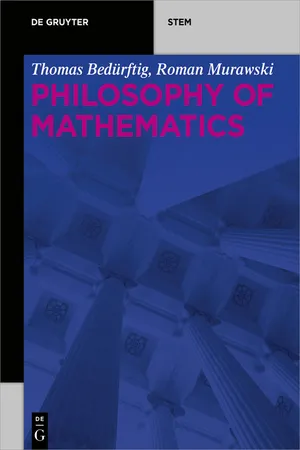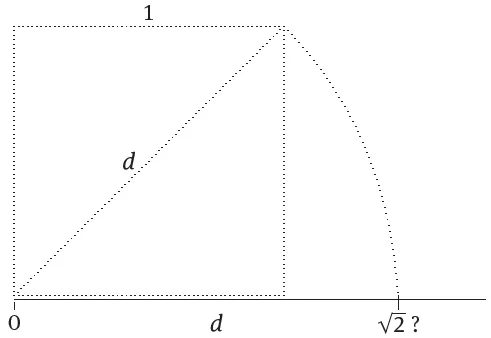
Philosophy of Mathematics
Thomas Bedürftig, Roman Murawski
- 474 pages
- English
- ePUB (mobile friendly)
- Available on iOS & Android
Philosophy of Mathematics
Thomas Bedürftig, Roman Murawski
About This Book
The present book is an introduction to the philosophy of mathematics. It asks philosophical questions concerning fundamental concepts, constructions and methods - this is done from the standpoint of mathematical research and teaching. It looks for answers both in mathematics and in the philosophy of mathematics from their beginnings till today. The reference point of the considerations is the introducing of the reals in the 19th century that marked an epochal turn in the foundations of mathematics.
In the book problems connected with the concept of a number, with the infinity, the continuum and the infinitely small, with the applicability of mathematics as well as with sets, logic, provability and truth and with the axiomatic approach to mathematics are considered. In Chapter 6 the meaning of infinitesimals to mathematics and to the elements of analysis is presented.
The authors of the present book are mathematicians. Their aim is to introduce mathematicians and teachers of mathematics as well as students into the philosophy of mathematics. The book is suitable also for professional philosophers as well as for students of philosophy, just because it approaches philosophy from the side of mathematics. The knowledge of mathematics needed to understand the text is elementary.
-
- Reports on historical conceptions.
- Thinking about today's mathematical doing and thinking.
- Recent developments.
- Based on the third, revised German edition.
- For mathematicians - students, teachers, researchers and lecturers - and readersinterested in mathematics and philosophy.
-
Contents
On the way to the reals
On the history of the philosophy of mathematics
On fundamental questions of the philosophy of mathematics
Sets and set theories
Axiomatic approach and logic
Thinking and calculating infinitesimally – First nonstandard steps
Retrospection
Frequently asked questions
Information
1On the way to the reals
1.1Irrationality
















Table of contents
- Cover
- Title Page
- Copyright
- Contents
- Preface
- Introduction
- 1 On the way to the reals
- 2 On the history of the philosophy of mathematics
- 3 On fundamental questions of the philosophy of mathematics
- 4 Sets and set theories
- 5 Axiomatic approach and logic
- 6 Thinking and calculating infinitesimally – First nonstandard steps
- 7 Retrospection
- Biographies
- Bibliography
- Index of names
- Index of symbols
- Index of subjects